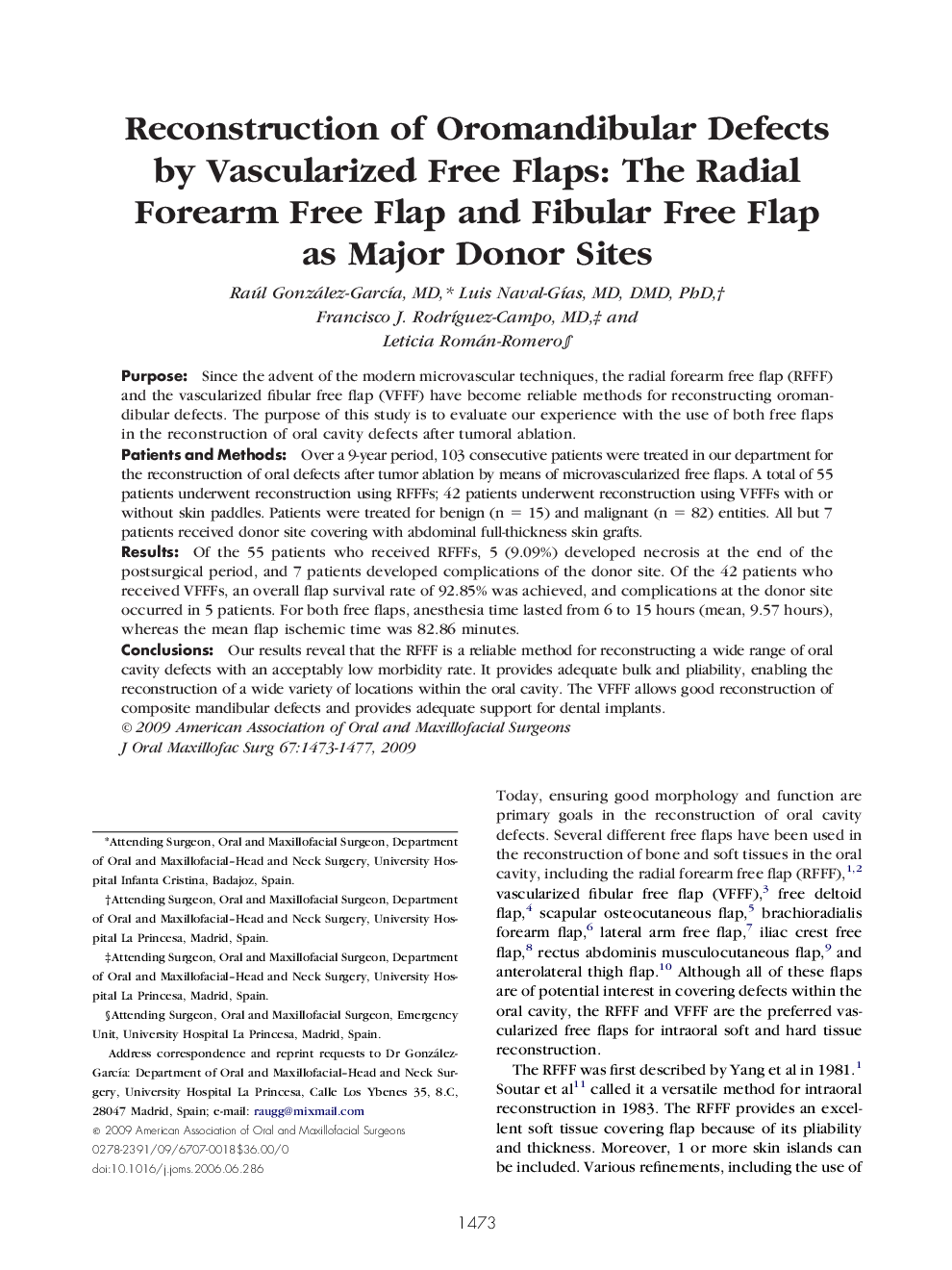| Article ID | Journal | Published Year | Pages | File Type |
|---|---|---|---|---|
| 3158488 | Journal of Oral and Maxillofacial Surgery | 2009 | 5 Pages |
PurposeSince the advent of the modern microvascular techniques, the radial forearm free flap (RFFF) and the vascularized fibular free flap (VFFF) have become reliable methods for reconstructing oromandibular defects. The purpose of this study is to evaluate our experience with the use of both free flaps in the reconstruction of oral cavity defects after tumoral ablation.Patients and MethodsOver a 9-year period, 103 consecutive patients were treated in our department for the reconstruction of oral defects after tumor ablation by means of microvascularized free flaps. A total of 55 patients underwent reconstruction using RFFFs; 42 patients underwent reconstruction using VFFFs with or without skin paddles. Patients were treated for benign (n = 15) and malignant (n = 82) entities. All but 7 patients received donor site covering with abdominal full-thickness skin grafts.ResultsOf the 55 patients who received RFFFs, 5 (9.09%) developed necrosis at the end of the postsurgical period, and 7 patients developed complications of the donor site. Of the 42 patients who received VFFFs, an overall flap survival rate of 92.85% was achieved, and complications at the donor site occurred in 5 patients. For both free flaps, anesthesia time lasted from 6 to 15 hours (mean, 9.57 hours), whereas the mean flap ischemic time was 82.86 minutes.ConclusionsOur results reveal that the RFFF is a reliable method for reconstructing a wide range of oral cavity defects with an acceptably low morbidity rate. It provides adequate bulk and pliability, enabling the reconstruction of a wide variety of locations within the oral cavity. The VFFF allows good reconstruction of composite mandibular defects and provides adequate support for dental implants.
